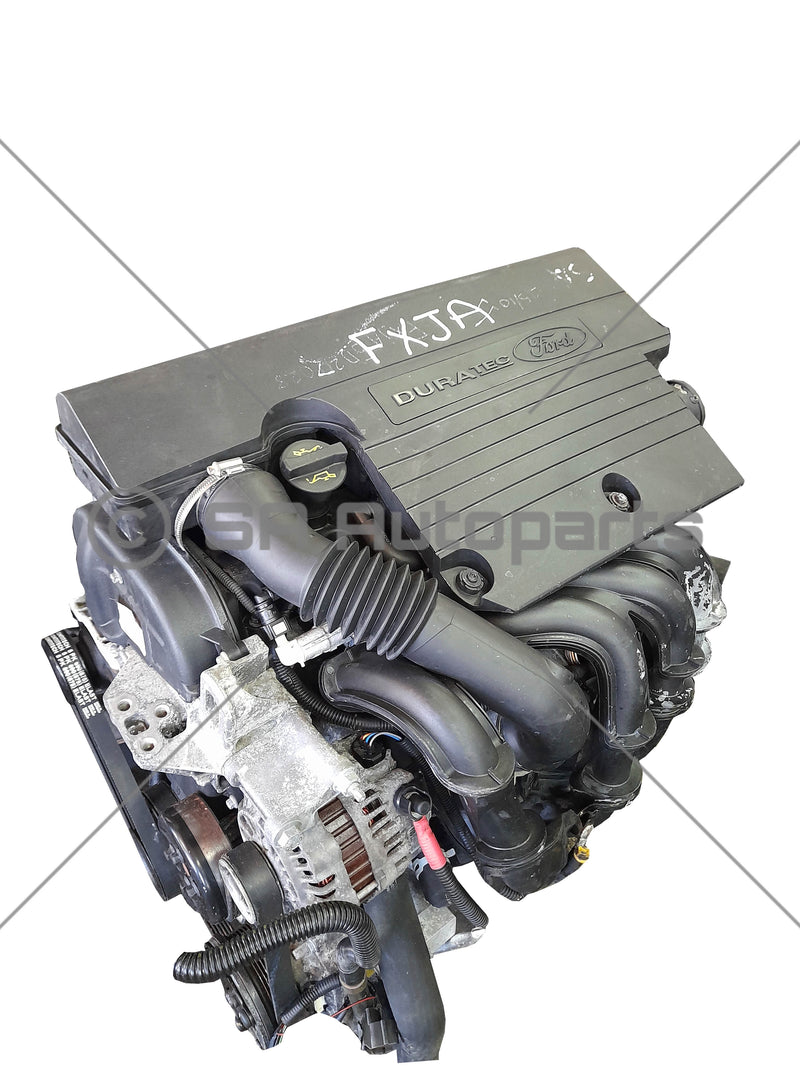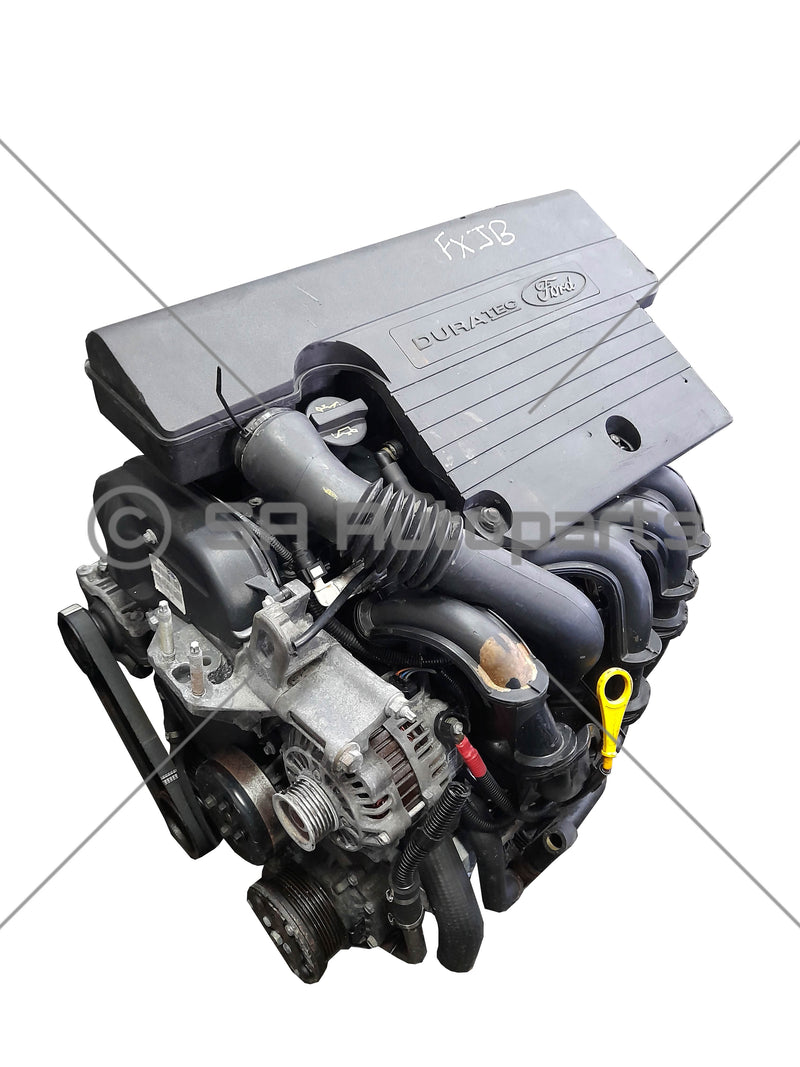Exploring the Benefits of a High-Performance Ford Fiesta Engine
Exploring the Benefits of a High-Performance Ford Fiesta Engine
Blog Article
The Future of Engines: Advancements Driving Lasting Power Solutions
As the auto market navigates the imperative change in the direction of sustainability, the future of engines is progressively defined by groundbreaking advancements. Electric engine developments, together with encouraging growths in hydrogen gas cells and biofuels, are reshaping the landscape of power remedies. The appearance of crossbreed systems further complicates this advancement, offering both possibilities and challenges to reduce emissions efficiently. Combined with the integration of fabricated intelligence in engine style, these technical strides elevate critical questions about their long-term feasibility and influence on traditional paradigms. What might this indicate for the sector and customers alike?
Electric Engine Dope
The advancement of electric engine developments symbolizes a pivotal shift in the aerospace and auto sectors, driven by the immediate need for lasting alternatives to fossil gas. This change is defined by considerable developments in battery innovation, power electronic devices, and electric motor design, which collectively enhance the performance and efficiency of electrical engines.
Recent technologies have actually led to the production of lighter, a lot more energy-dense batteries, such as lithium-silicon and solid-state batteries, which assure longer arrays and shorter billing times. Furthermore, enhancements in electric motor effectiveness, such as making use of long-term magnets and advanced cooling systems, make it possible for electrical engines to operate properly under varying problems. These enhancements not only enhance lorry performance however also add to a reduction in total power intake.
Additionally, the integration of innovative software application formulas has actually optimized energy management in electrical automobiles, enabling regenerative stopping and predictive billing strategies. As suppliers progressively embrace electric propulsion, the aerospace and automobile markets are observing a standard change in the direction of greener technologies. This advancement not just meets governing demands however additionally straightens with customer preferences for ecologically friendly transport services, strengthening electric engines as a cornerstone of future lasting movement.
Developments in Biofuels
As the auto and aerospace sectors progressively prioritize sustainable power sources, innovations in biofuels arise as a corresponding option to electric engines. Biofuels, stemmed from organic materials such as crops, waste, and algae, offer a cutting-edge method for lowering greenhouse gas emissions and reliance on fossil gas.
Current research study has focused on improving the performance and sustainability of biofuel manufacturing. Second-generation biofuels use non-food feedstocks, reducing competitors with food supply and decreasing environmental impact. Improvements in synthetic biology have enabled the design of microorganisms to produce biofuels extra successfully, leading to greater yields and reduced production costs.
Furthermore, the growth of drop-in biofuels enables for seamless combination into existing facilities, making it possible for a smoother change for sectors traditionally based on nonrenewable fuel sources. ford fiesta engine. These fuels can be used in current engines without adjustments, promoting their fostering throughout various markets
Investments in biofuel innovation, along with supportive policies, are vital to drive development and scalability. As the international area looks for to combat climate modification, biofuels provide a practical, instant service that straightens with the overarching objective of sustainability in transportation and aeronautics.
Hydrogen Fuel Cell Innovation
An expanding variety of companies and scientists view are checking out hydrogen gas cell modern technology as a feasible choice to conventional source of power in transport and energy systems. This innovation transforms chemical power from hydrogen into electricity via an electrochemical response, with water as the only by-product, making it an eco friendly choice.
The core of hydrogen gas cells is the fuel cell stack, where hydrogen molecules are split into electrons and protons. The flow of electrons creates electrical power, while protons move with a membrane layer to integrate with oxygen from the air, forming water. This process leads to high performance and reduced exhausts, positioning hydrogen gas cells as an important gamer in the change to lasting power.
Substantial innovations have actually been made in improving the sturdiness and effectiveness of fuel cells, alongside decreasing costs via cutting-edge manufacturing techniques. Additionally, the development of hydrogen manufacturing methods, such as electrolysis powered by renewable resource sources, enhances the sustainability of the overall system. As infrastructure for hydrogen refueling expands and manufacturing methods become extra effective, hydrogen gas cell innovation holds wonderful promise for decarbonizing different markets, consisting of sturdy transport and fixed power generation.
Crossbreed Solutions and Their Impact
Hybrid systems represent a substantial advancement in sustainable engine innovation, merging conventional inner combustion engines with electrical propulsion to maximize power efficiency and decrease discharges (ford fiesta engine). This dual approach allows cars to use both source of power, enabling greater flexibility in power usage and lowering reliance on nonrenewable fuel sources

In addition to ecological benefits, crossbreed systems offer consumers a practical change towards completely electrical cars. They ease variety anxiety by incorporating the comfort of fuel with the see benefits of electrical propulsion, making them an appealing choice for a larger audience.
The Function of AI in Engine Design
Leveraging sophisticated formulas and equipment knowing strategies, the auto industry is significantly incorporating expert system (AI) right into engine design processes. AI enhances the effectiveness and performance of layout by examining substantial datasets to identify optimum arrangements and performance criteria. This ability allows designers to simulate different operating conditions and predict engine actions under numerous situations, my review here significantly minimizing the moment and expense related to traditional prototyping techniques.
In addition, AI promotes the growth of advanced materials and burning procedures customized for sustainability. By optimizing fuel effectiveness and decreasing exhausts, AI-driven designs line up with global initiatives targeted at reducing the carbon footprint of automobile engines. Artificial intelligence algorithms can additionally forecast upkeep demands, causing boosted reliability and durability of engine parts.
Moreover, AI is instrumental in the integration of electrification technologies, such as crossbreed systems, where it can maximize battery management and power recuperation procedures. As the industry relocates towards more lasting power services, the function of AI in engine style becomes progressively essential, driving advancement and enhancing the performance of future engines. Ultimately, the partnership in between AI and engine style heralds a new age of smarter, cleaner, and more efficient auto modern technologies.

Verdict
In verdict, the future of engines is being formed by a convergence of ingenious technologies that focus on sustainability. Electric engine developments, biofuel growths, hydrogen gas cells, and crossbreed systems jointly contribute to a considerable reduction in emissions and environmental influence.
Electric engine improvements, together with appealing developments in hydrogen gas cells and biofuels, are improving the landscape of power remedies. Furthermore, enhancements in electric motor performance, such as the usage of permanent magnets and progressed cooling down systems, allow electric engines to run efficiently under differing problems. By enhancing fuel performance and decreasing discharges, AI-driven layouts line up with worldwide campaigns intended at reducing the carbon impact of vehicle engines. As the market relocates towards more lasting power solutions, the duty of AI in engine layout ends up being significantly vital, driving innovation and boosting the performance of future engines. Electric engine developments, biofuel growths, hydrogen fuel cells, and crossbreed systems collectively contribute to a substantial reduction in discharges and environmental effect.
Report this page